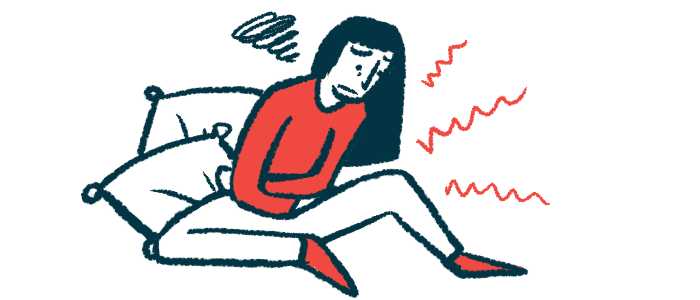Purple stretch marks with metabolic disorder may indicate Cushing’s
Diagnosis can be challenging, but stretch marks provide a clue: Case report

Doctors should suspect Cushing’s syndrome when they see patients with purple stretch marks and metabolic conditions such as diabetes, even if those symptoms aren’t the reasons for a medical visit, physicians in Japan wrote in a case study describing how they reached that diagnosis for a woman in her early 30s.
“I never thought to be diagnosed with such a rare disease at the visit for abdominal symptoms,” said the woman, who had gained weight over the years and developed diabetes and high blood pressure two years earlier. “The diagnosis of [Cushing’s syndrome] connected me to everything that had happened to me over the years,” she said.
Her case was described in a study, “Violaceous abdominal striae noted on physical examination: a clue to the diagnosis of Cushing’s syndrome,” published in the journal BMJ Case Reports.
Cushing’s syndrome is an umbrella term referring to any condition characterized by hypercortisolism, or high levels of cortisol, regardless of the cause. Symptoms include central obesity (excess fat around the waist) and violaceous striae (purple stretch marks).
Diagnosis “can be challenging due to the lack of a unique sign of hypercortisolism and an overlap with more common clinical conditions such as metabolic syndrome,” a cluster of conditions that raise the risk of diabetes and other health problems, the researchers wrote.
Abdominal pain linked to antidiabetic medication semaglutide
That was the case with the woman in the study, who went to the hospital for abdominal pain that had lasted four days. She had a history of bipolar disorder.
A physical exam revealed central obesity and abdominal violaceous striae, but an ultrasound and an endoscopic procedure used to observe her internal organs showed no signs of inflammation in the abdomen. A blood test for markers of inflammation also came back negative.
Abdominal pain can be a side effect of oral semaglutide, an antidiabetic medicine the woman had taken to help control her blood sugar levels. And “discontinuation of this medication led to resolution of the abdominal complaints,” the researchers wrote.
A urine test revealed higher-than-normal levels of cortisol, and blood cortisol levels were just above normal.
The woman’s cortisol levels remained higher than normal after a low-dose dexamethasone test. Dexamethasone is a corticosteroid that mimics the activity of cortisol. Normally, it triggers regulatory mechanisms in the body that lower cortisol. In Cushing’s syndrome, cortisol levels remain high.
Purple stretch marks ‘most specific’ sign of Cushing’s
An MRI scan revealed no tumor in the pituitary gland. In principle, that would exclude the possibility of Cushing’s disease, a type of Cushing’s syndrome in which a tumor causes the pituitary gland to release abnormally high levels of adrenocorticotropic hormone (ACTH), triggering the production of cortisol by the adrenal glands sitting atop the kidneys.
A corticotropin-releasing hormone test on the woman showed a 290% elevation in ACTH levels and a 150% elevation in cortisol. Pituitary tumors tend to be sensitive to the test.
The test results led the doctors to diagnose Cushing’s syndrome. The woman was started on metyrapone, a cortisol-lowering medication marketed under the brand name Metopirone, as she did not consent to surgery.
“Among various physical features observed in patients with [Cushing’s syndrome], abdominal violaceous striae are the most specific,” the researchers wrote.
Found in about half of patients, “striae owing to hypercortisolism are often wide and purple, in contrast to the narrow and pale or pink striae [caused] by rapid weight gain,” they wrote.
Cushing’s syndrome “should be suspected in a patient with violaceous abdominal striae and metabolic comorbidities [coexisting conditions] even if [the patient] presented to the hospital for a different reason,” the team concluded.








